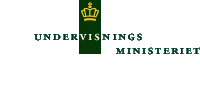
Chapter 6
FROM LOCAL TO GLOBAL
Agenda 21 NOW!
International Internet Conference The “Agenda 21 NOW!” story
By Martin Jarrath, Germany
This is the story of the “Agenda 21 NOW!” International Internet Conference, a joint initiative of Anna-Schmidt School, Frankfurt am Main, and Kandel Comprehensive School, Ger-many The story begins in 1996 when the Internet started to noticeably reach schools in Germany and elsewhere. Schools started to connect to the Internet and a wealth of new possibilities was offered for lessons in all subjects. But what about the content?
The idea
The idea for “Agenda 21 NOW!” comes out of a network. It emerged during the annual Ger-
man UNESCO ASPnet schools meeting in Sep-tember 1998, when school representatives discussed ideas for an action day on education for sustainability in 2000. We decided to introduce the Internet as a useful means of communication for educational purposes.
The main ideas were:
- To focus on the contents, not on the technical aspect
- To combine the new technical possibilities with traditional methods of intercultural learning: give students the opportunity to come into personal contact with students from other countries and communicate on certain topics for a certain period of time
- To do something with a long-lasting effect
- To make use of the existing networks we are a part of, i.e. the UNESCO ASPnet and the Baltic Sea Project.
Step one:Title
The title should be a worldwide call for participation in the Agenda 21 process, to make the goals of the Agenda 21 come true. This led to the term “Agenda 21 NOW!”.

Step two: Basics
We wanted every participant to be able to find out easily who he/she was having a discussion with. We wanted this information to be reliable and to avoid misuse of personal data.
We wanted high-quality discussions among well-prepared participants. Hence, we had to provide a website where the participants would find materials and linked sites for their preparatory work during school lessons and elsewhere.
We wanted easy-to-follow, yet serious discussions. This led to the idea that contributions should be content-related: At any time it should be possible to see logical connections between the contributions; for example, which answer belongs to which question.
We wanted the participants to feel safe and confident in the conference. Therefore, the conference is open for registered participants only and for a limited time only.
We wanted easy access: Students from all over the world should be able to participate, provided they have access to an Internet computer somewhere, be it at school, at home, at a friend’s house or in an Internet café.
Last but not least, we wanted students from all countries to be able to fully participate in all parts of the conference regardless of computer equipment and age of modems. This excludes, for example, video conferences. A demand for modern equipment would exclude many schools, especially in poorer countries, and deepen the digital gap.
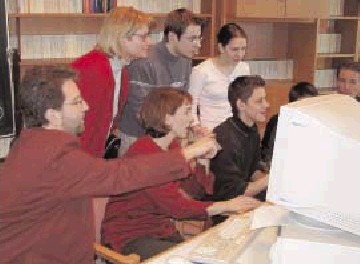
Teachers supervise and students work as moderators
Step three: Preparing a conference
In preparation of the conference, we needed a nicely-designed website that invited teachers and students from all over the world to participate. The website should clearly announce the place, date, time and theme of the Internet conference, it should provide materials for the teachers and students to prepare for the conference, and it should contain links to websites with conference-related information.
During the conference itself we made available virtual Internet conference rooms with a content-related order of written contributions. One click on the author’s name should show the most important data of the author - name, age, town, country, e-mail-address, etc. This allows contacts and further discussions among the participants, also after the conference.
Through the use of PHP communication software, we could offer participants real-time communication – with spontaneous questions and answers. We considered this to be highly attractive to the young people, and a very skilled upper secondary student, Thomas Detsch, created this PHP communication software according to our expressed needs.
Step four: Finalising the structure
We wanted the structure to be that of an ordinary conference: It must have a specific date, and a specific but limited duration. As regards duration, 24 hours was chosen to allow students around the globe to discuss at a local time of the day, and e-mails in advance enabled registration and information to be given beforehand.
On registering for the conference each participant receives a password and can enter any of the conference rooms after passing the gate.
Each conference room has a moderator, who has been specially prepared for the task.
The discussions take place in real-time, with a new contribution visible to all participants in the same conference room only seconds after it has been posted.
The conference allows participants to take part in several discussions at a time.
Step five: How to find participants
E-mail announcements to schools within the ASP and BSP networks spread the information effectively, and from these two networks the information is distributed worldwide.
Step six: The operational team
The preparatory team designs the website, writes editorials, makes texts and pictures and establishes contacts to newspapers, radio and television.
Step seven:Waiting for registrations
The registration period starts approx. three months before the conference. The number of registrations per day is usually very low in the beginning– which concerned us enormously at first – and then increases to reach a maximum on the day of the conference itself. All registrations are manually checked to avoid misuse.
Step eight: Moderators
Moderators (upper secondary students) work during the conference by asking questions to start discussions, by possibly changing the direction of a discussion, and by politely asking participants to follow the rules when necessary. Teachers assist as supervisors when help is needed. E-mails are co-ordinated and distributed so that moderators do not have to check e-mails themselves during the conference.
A technically-skilled upper secondary student serves as webmaster in case technical problems occur. A catering team, a task force and a security team provide all the necessary services, such as food, tools from the nearest computer store, and protection of the hard-working moderators from the crowd during the conference.
Experiences
The first conference took place in June 2000: The conference team in Frankfurt am Main, at Anna-Schmidt School, was extremely excited when the time for the opening drew near. The conference started on time at 00:00 U.T.C. (2 am in Frankfurt). And it worked! A number of participants in different corners of the world had seemingly been waiting for this beginning, and we witnessed an hour of good discussions with many people. It was really fascinating!
In the early morning a severe thunderstorm cut us off from e-mails for a couple of hours and damaged the computer system in our school. We were forced to continue the moderation of the conference with two laptop computers. Imagine four moderators sharing two small computers! This continued for three or four hours until the technical problem could fortunately be solved. For a while though, the situation looked technically very disappointing.
Fortunately, our webserver was situated in England, and the conference itself was therefore not affected. The only problem was that in Frankfurt we were more or less prevented from taking part. Once technically reinstalled, we found that the discussions had continued beautifully in the meantime, even without or with just a few moderators involved. Nevertheless, we then had a pleasant time with interesting discussions during the rest of the afternoon, cooling down in the evening. The team was extremely motivated, the co-operation during the 24 hours was excellent, and the conference was real fun for all of us.
Lessons learnt from the first conference in 2000
Apparently, it was attractive for students from all over the world to log into discussions with others about a topic of relevance to their future. We had many hours of interesting discussions.
The Internet conference gave students of countries such as Uganda the opportunity to –for the first time in their lives, as they wrote –come in contact with students from other countries!
A wonderful and highly motivated team of about 50 students and teachers had run the conference for 24 hours, sometimes faced with serious technical problems (thunderstorm damage), but able to ensure that at all times there had been a conference.
Moderators were important for the discussions, encouraging others to make a contribution, setting focus on important aspects, changing the direction of a discussion, and, on one occasion, politely asking somebody to follow the rules.
The quality of the discussions was mixed: Many were interesting, some even very intense. But there were also others that were not very serious and of poor quality. The best discussions emerged when talking about a concrete problem, or a special situation that encouraged different opinions. The improvement of the discussion quality was considered as one of the major challenges for the next conference(s).
Technically, the virtual Internet server we had was inadequate for the demands of such a conference. Moreover, such a conference server urgently needs a shield against Internet attacks. There are always people on the Internet who try to digitally attack such a conference, for example by so-called Denial-of-Service-Attacks, which might totally block the conference server.
Agenda 21 NOW! 2001 – 2003: Ways to improve the conference
Since 5 June 2000, Agenda 21 NOW! has taken place three more times, once every year.
Professional IT support
Information about our Internet conference has been spread worldwide. Hence, our conference is a target for hackers who try to digitally attack our Internet server. Since our second conference on 22 March 2001, CEMA AG, an IT company from Mannheim, Germany, has hosted our conference on a stand-alone physical server using state-of-the-art security technology. Nearly 4,500 attacks, reaching a maximum of 86 per second during the conference on 3 April 2003, have proven the necessity of such professional support. It would really be feasible to set up such technology in a school; it requires specialists from an IT company!
The co-operation with CEMA AG has simply been excellent. You could very well say that the people from CEMA AG have become members of the Agenda 21 NOW! team!
Moderator training
The quality of a discussion is to some extent dependent on the quality of the moderation. Moderators need to be prepared, and since our second conference we have asked all moderators to attend a short theoretical and practical training course in moderation one or two weeks before the conference.
Who should the website be for?
For students? For teachers? The first conference gave a clear answer: for teachers. It is the teachers who have to be attracted by our e-mail-announcements and encouraged to take a look at our website. If they consider our web-site to be interesting (and attractive) – we know such decisions are often made within seconds –they may decide to work on Agenda 21 NOW! topics with their students in one of their courses. There is strong evidence to suggest that most registrations are made because a teacher has told his/her students to do so. To make a website for students would mean creating a totally different design and presenting the contents in a totally different way. It is a good question whether this could really work, whether topics dealing with sustainability and Agenda 21 could in general be so attractive that many students would deal with them in their leisure time totally voluntarily and without any special recommendation by a teacher.
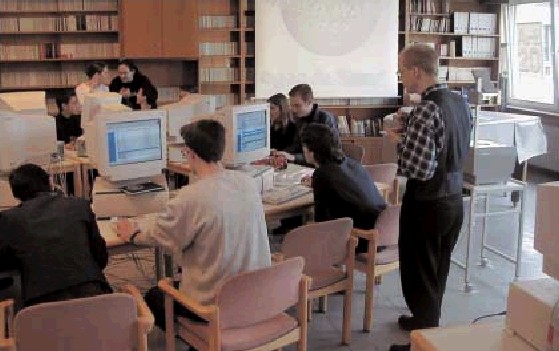
The 2001 - theme was Water
This shows the important role of teachers in times of IT and modern media. Furthermore, teachers are multipliers, moderators of learning processes, and the ones who choose and introduce (new) topics into a learning process – or not, as the case may be.
Experts
It is nice to experience so many people from so many different countries having intense discussions together. We thought it might be even nicer – and more interesting! – to additionally have experts talking to the students in the In-ternet conference rooms. Experts – if well known locally or even internationally – might attract more people to take a look at our conference or to take part. And their contributions in the discussions have notably enriched the discussions. One of the experts of the 2002 conference was Prof. Bert Bolin, professor of meteorology at the University of Stockholm, former chairman of the International Panel on Climate Change (IPCC) and author of the introductory article in the BSP Learners’ Guide “Air Quality”. Since the third conference on 25 April 2002, participants have had the opportunity to discuss with several international experts during the conference.
The conference theme
“Agenda 21 NOW!” is the title of our project, and since Agenda 21 is such a huge plan of action, we have decided to focus on selected aspects in every conference. Therefore, each conference is devoted to a special theme.
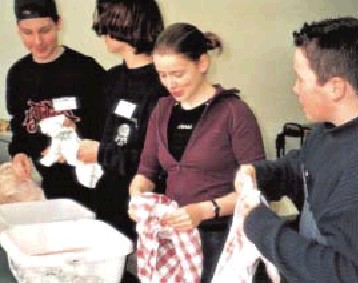
A catering team of students provide the necessary food, and also wash the dishes
In 2001, the theme was “Water”, as the conference took place on World Water Day, 22 March. In 2002, it was “Floods and Deserts”, focusing on the probable or possible effects of global warming. Both these themes, looking at the number of participants, were well accepted: 1200+ participants in 2001, 1900+ in 2002. In 2003, the theme was an experiment: “Borders and Diversity – Can we live together sustainably in a globalising world?” Borders between countries and inside countries, maybe even in our heads, still exist world-wide, on all continents. How can we respect each other, respect the diversity of human culture and maintain peace in a globalising world?
The total number of participants (1500+) was lower than in 2002, but all moderators considered the quality of the discussion contributions notably better than the year before. The conference on 3 April 2003 took place during the war in Iraq, and our conference room “Peace after War” about the consequences of this war was by far the most frequented conference room of the entire conference.
Expansion and co-operation
At the 2003 conference, the growing Agenda 21 NOW! team consisted of about 70 teachers and students from two schools situated in two rather different places (about 150 km apart). The co-operation has been enriching for both the people from Frankfurt and from Kandel. The two schools are not competing but genuinely co-operating as one team.
Does the Agenda 21 NOW! Internet conference reach its goals?
We have seen that a considerable number of participants have taken part repeatedly in our conference. There are schools which have been with us in all four conferences. We think – and hope! – that Agenda 21 NOW! is being considered as an interesting way to make use of the new possibilities of the Internet in lessons of non-technical subjects, such as English, social science, geography, biology, history and others. This way we hope to accomplish our goal that action moves from local to regional to global!
Agenda 21 NOW! started as an experiment; an example in extremely easy content-orientated international co-operation using modern media. Apart from anything else you might say about Agenda 21 NOW!, we hope that to most participants it has been what it has truly been to us, the Agenda 21 NOW! team:
- a lot of work
- a lot of fun
- a continuous opportunity to learn from and about others!
Therefore, the story will be continued.
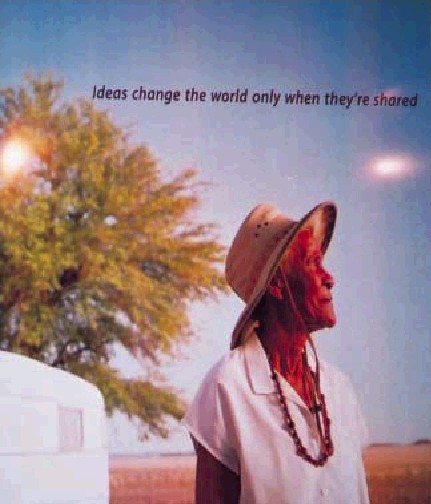
Ideas change the world only when they’re shared. Poster at World Summit, Johannesburg, 2002

Denne side indgår i publikationen "EDUCATION FOR SUSTAINABLE DEVELOPMENT" som kapitel 6 af 8
© Undervisningsministeriet 2003
|